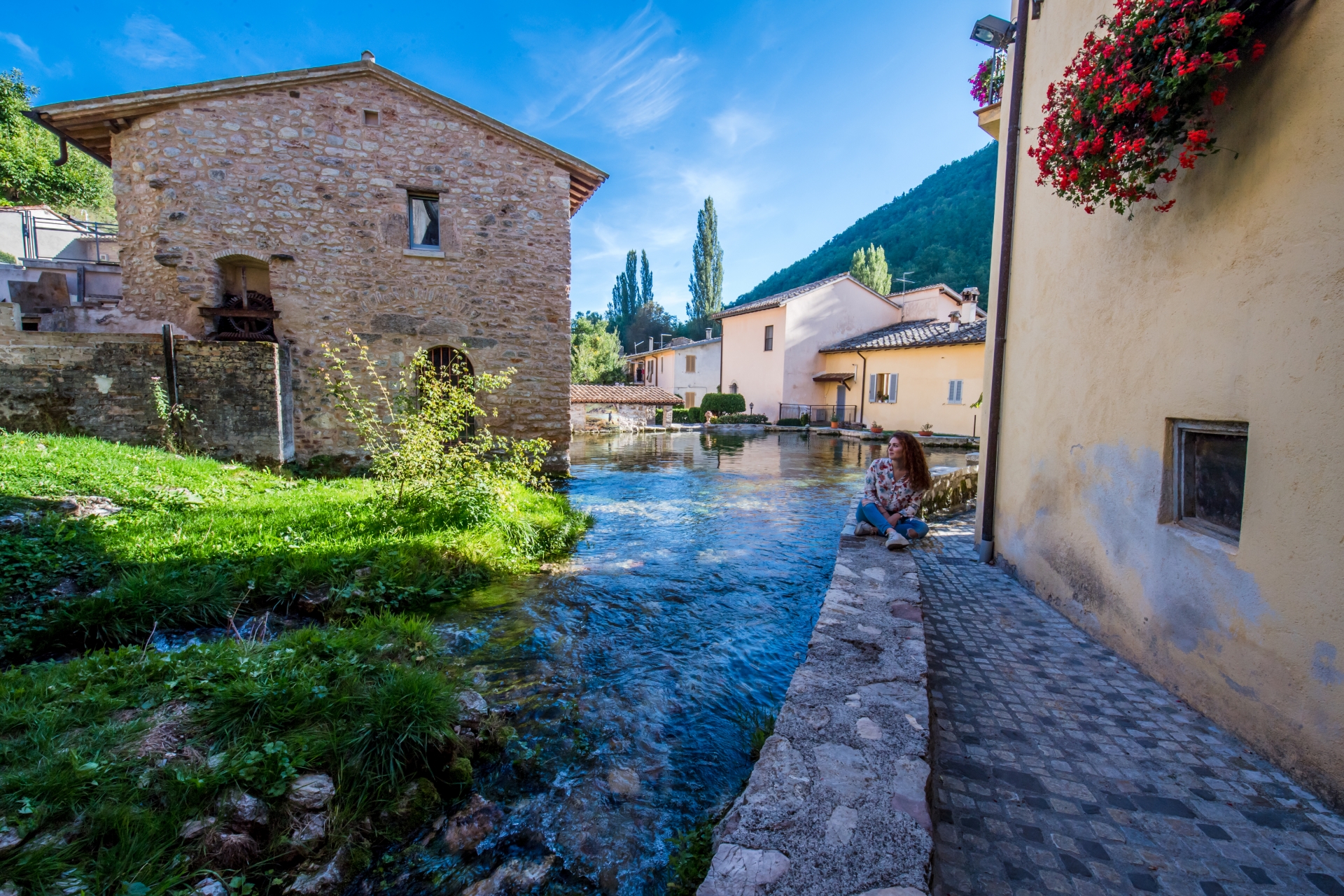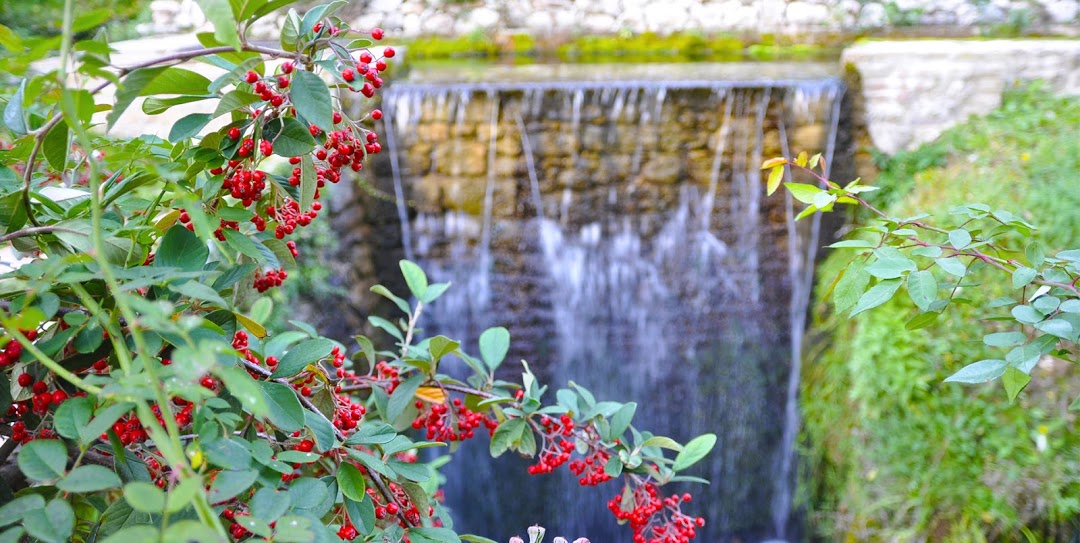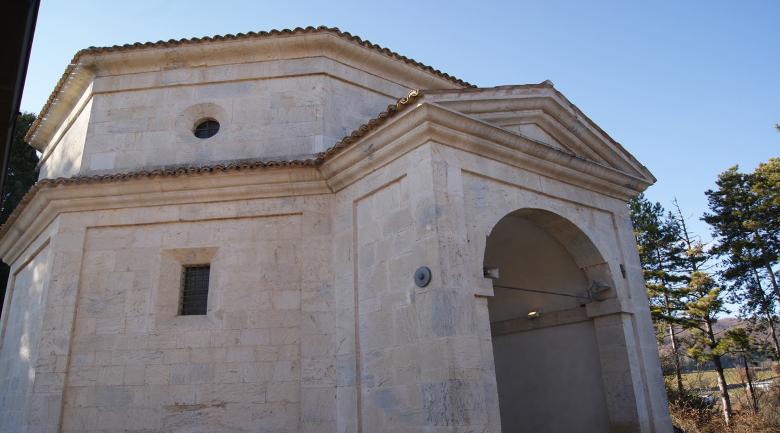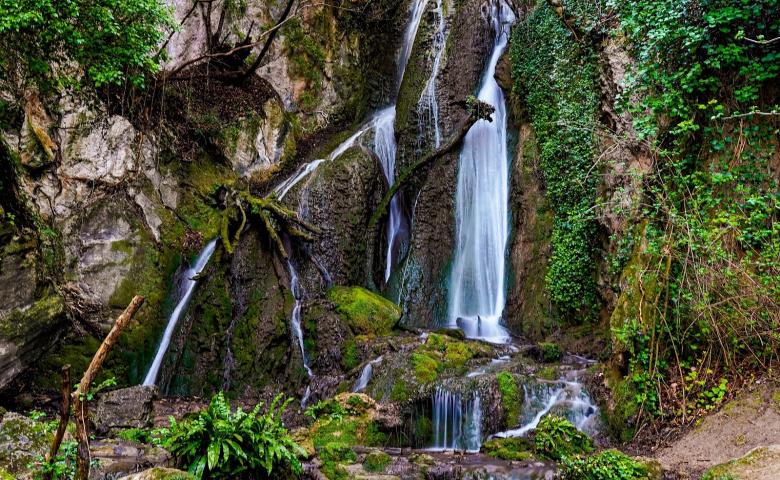Rasiglia and its springs
“I find myself alone in this Alpine spot at the foot of a holy and glorious mountain, where a source with whispering waters arises among alive stones…”
Marco from Rasiglia, poet
Rasiglia is a little mountain village located at above 600 metres of altitude, along the Sellano State Road 319, approximately 18 km from Foligno, its municipality .
It maintains the typical characteristics of the medieval village with its amphitheatre structure, and is especially famous for its springs: while you walk along Rasiglia's charming alleys, you can't resist the enchantment of the watercourses that cross it and make it unique and fascinating.
The main spring that waters Rasiglia is Capovena: it is located in the high part of the village, at the foot of the palace occupied by the Trinci, who were lords of Foligno between 1305 and 1439, and crosses the village through rivulets and small waterfalls that flow together into a big tank called “Peschiera”, and then into the river Menotre.
































.jpeg/76ca5d40-a3d4-d164-117d-386a29293907?width=780)

.jpg/aee4095a-1a17-509d-52a4-c9d2dc2bc036?width=780)

